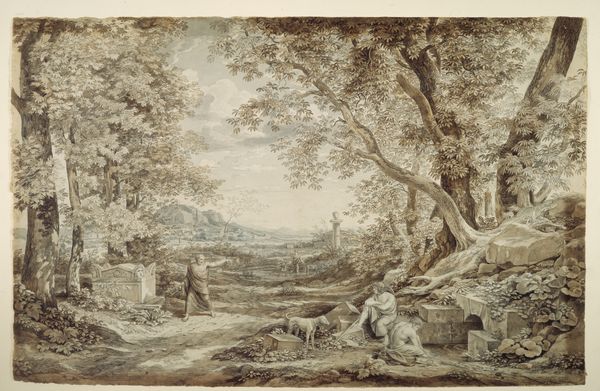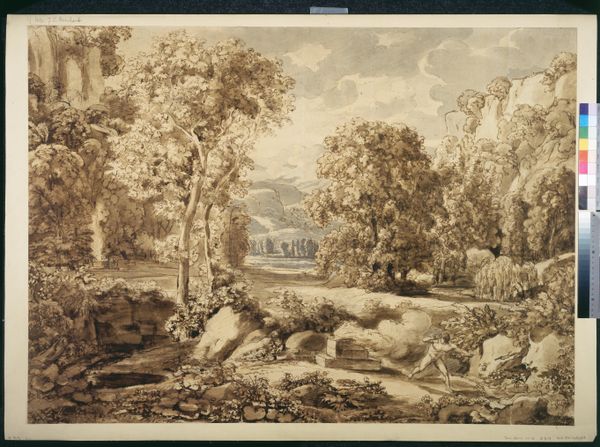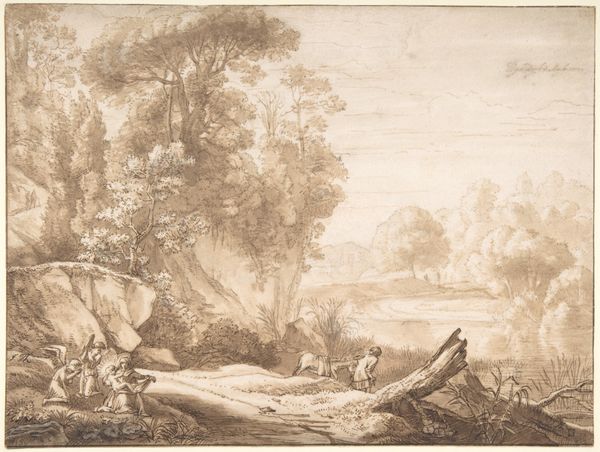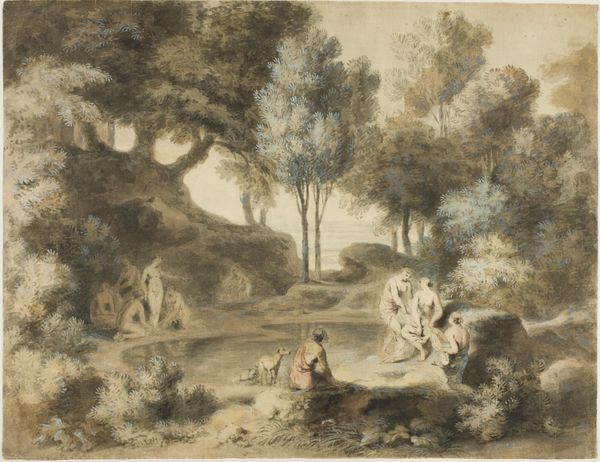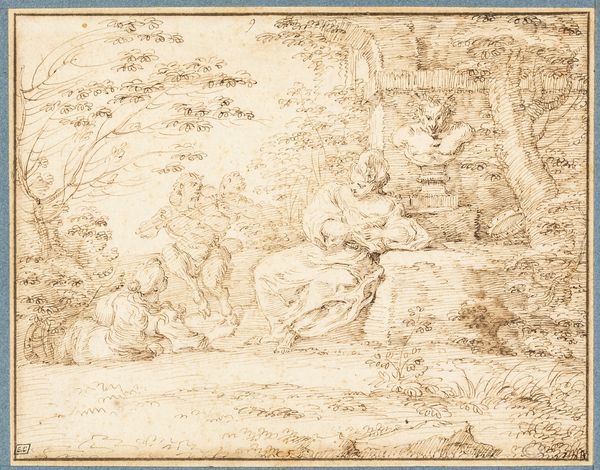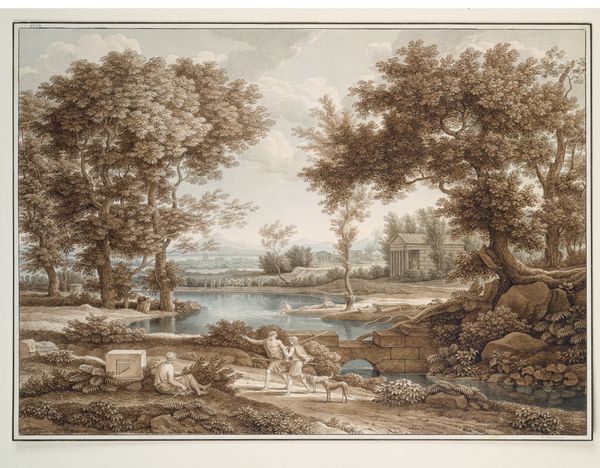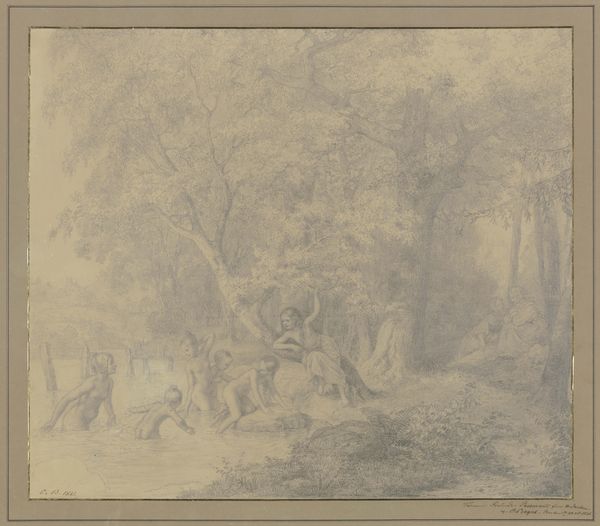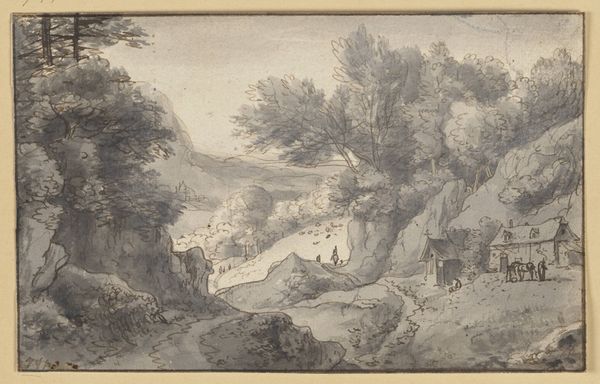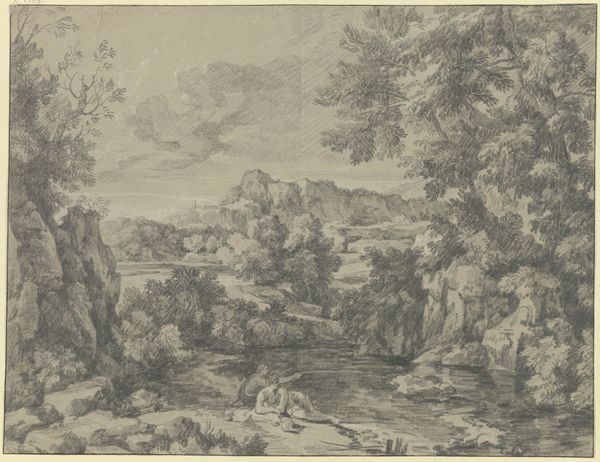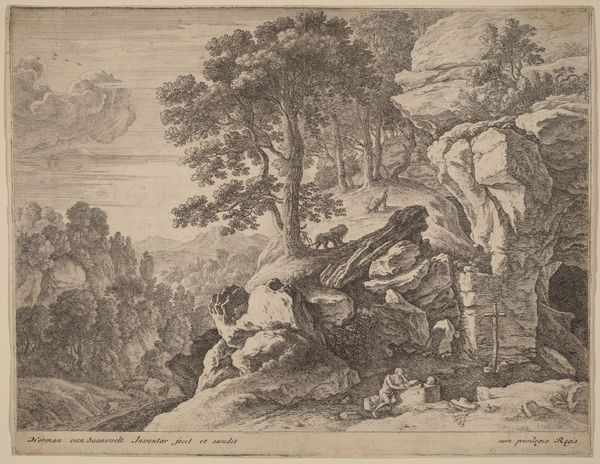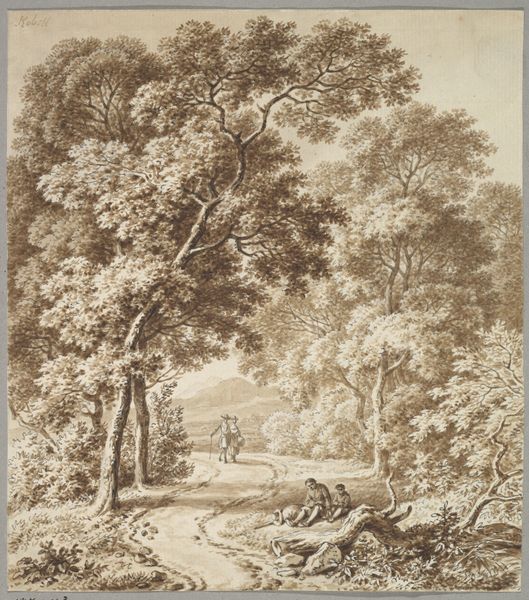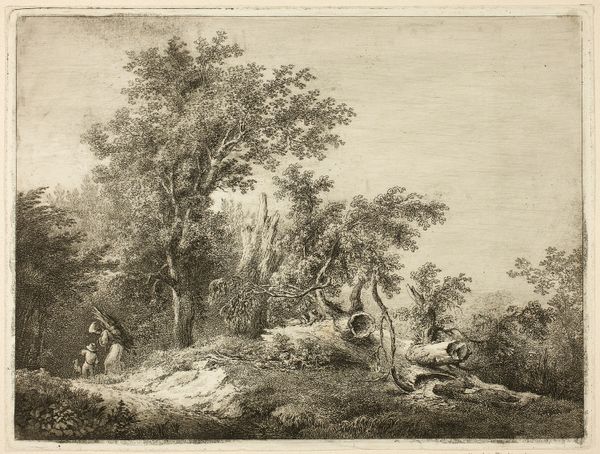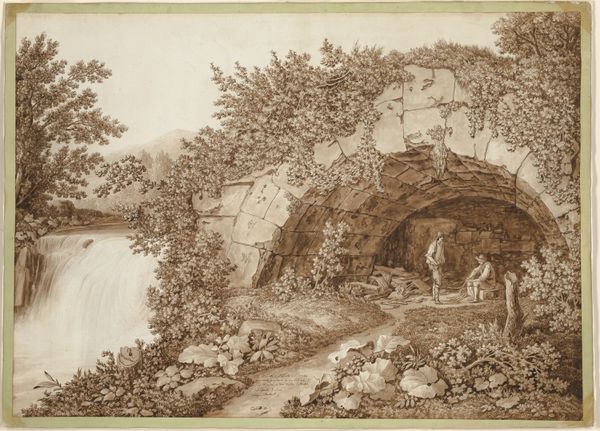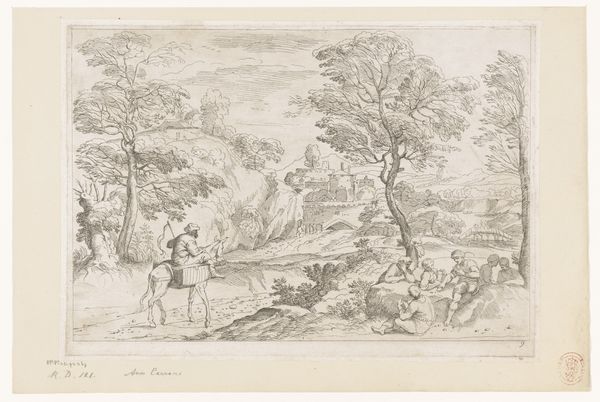
Heroische Landschaft mit dem Tod des Opheltes beim Zuge der Sieben gegen Theben 1798
0:00
0:00
drawing, paper, ink
#
drawing
#
ink painting
#
landscape
#
paper
#
ink
#
classicism
#
romanticism
#
history-painting
Copyright: Public Domain
Editor: This is Johann Christian Reinhart’s "Heroische Landschaft mit dem Tod des Opheltes beim Zuge der Sieben gegen Theben," an ink drawing from 1798. It’s quite detailed, almost photographic in its rendering of the landscape, but with a clear dramatic narrative unfolding. How do you interpret this work? Curator: Reinhart’s piece is interesting for what it reveals about the changing function of art. He's not simply depicting a classical story. Look closely at the materiality. The labor-intensive ink drawing becomes a commodity itself. The production of detailed landscapes allowed the burgeoning middle class to "possess" these idealized views. Doesn’t this render the heroic narrative secondary to the marketability of the image itself? Editor: So, you're saying the market dictated the subject, almost like an early form of advertising? Does that cheapen the art, or the intention? Curator: Not cheapen, necessarily. Instead, it illuminates the conditions of production. Consider the paper, the ink – these raw materials came from somewhere, were processed by someone. This isn't just about art; it's about labor and the economic system in which Reinhart operated. Does the rise of printmaking and drawing create broader social access to classical imagery, or simply convert mythology into another form of currency? Editor: That’s a very different way of seeing it! I was focused on the heroic scene, but now I am thinking about the system that allowed this work to be created and circulated. Curator: Exactly! The artwork is inseparable from its means of production. And in Reinhart's case, we see the artist becoming a producer within a market structure. We often look at the final product, but forget to analyze the labor embedded within. Editor: I learned so much from this; the commercial perspective adds another layer of depth to landscape drawings. Curator: Indeed, always question the ‘how’ and ‘why’ of its making and consumption, not just the ‘what’ it represents.
Comments
No comments
Be the first to comment and join the conversation on the ultimate creative platform.
